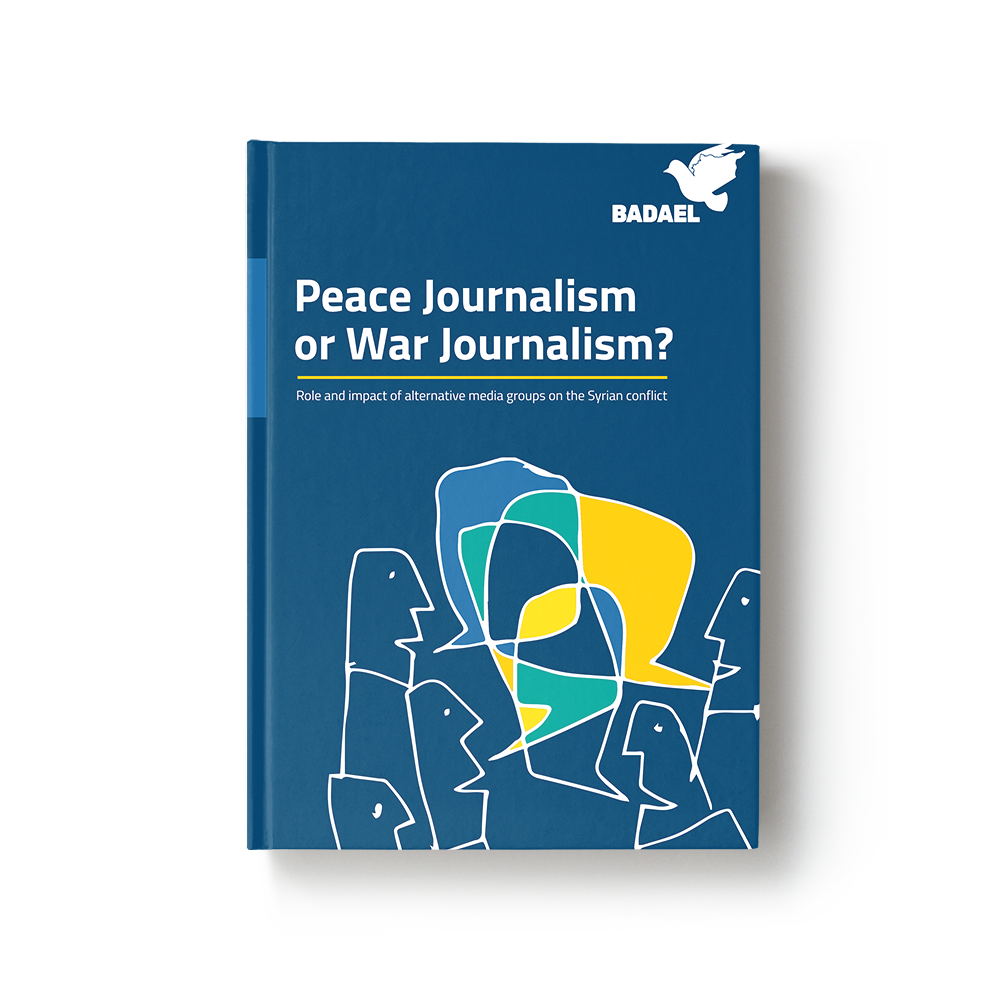
Peace journalism or War Journalism?
- Date of Publishing 18 March 2016
- Download badael.org
Theoretical Introduction
This study examines the relationship between media and conflict through a comparative analysis of two models: war journalism and peace journalism, as outlined by Johan Galtung. These models reflect two contrasting approaches in covering conflicts. War journalism focuses on violence, breaking news, and a binary narrative of good versus evil. Peace journalism, in contrast, seeks to explore the deeper causes of conflict, amplify marginalized voices, and promote understanding and reconciliation. The research aims to assess the performance of local media outlets in opposition-held areas of Syria in relation to these models and to identify the structural and professional challenges they face.
The Media Landscape in Opposition Areas: Context and Evolution
Since 2011, over 60 local media outlets have emerged in Syria, particularly in areas outside regime control. The absence of state institutions created space for new, independent media initiatives. However, the evolving dynamics of conflict and the dominance of military and political actors significantly influenced these outlets. According to the findings, 77% of the surveyed outlets were established after 2011, and 55% currently operate in areas outside regime control, while the rest work in regions under the Autonomous Administration or in Turkey.
Content Analysis: A Dominance of War Journalism
The content analysis revealed that the majority of media coverage aligns with the war journalism model. Approximately 68% of reports focused on armed confrontations without addressing their political or social roots. Moreover, 81% of the reviewed content used binary framing, depicting one side as a victim and the other as an aggressor. About 72% of reports relied on official or elite sources, while only 28% featured voices from civil society or local communities.
Political Influence and Donor Dependency
The study found that 64% of media outlet managers acknowledged that funding priorities directly shape their editorial agendas. Additionally, 39% of journalists admitted having modified or withheld reports due to pressure from funders or local authorities. Around 61% of the outlets lacked internal editorial guidelines or accountability mechanisms, further weakening their independence and professionalism.
Political Environment and Military Pressures
About 45% of journalists reported being threatened or detained because of their coverage of local military or political actors. In areas like Idlib and northern Aleppo, where groups such as Hay’at Tahrir al-Sham or the Syrian National Army are active, media censorship and restrictions on press freedom are particularly severe. Although some level of pressure also exists in Autonomous Administration areas, it is comparatively less intense.
Lack of Training and Institutional Fragility
The research highlights that 59% of local media workers have no academic background in journalism or media. Moreover, 62% had not received any regular professional training. The absence of editorial teams and fact-checking units in 74% of the institutions increases the risk of disinformation and errors in reporting.
Audience Disconnect
Community interviews revealed a growing gap between local media and their audiences. Approximately 67% of respondents said they do not trust local media, viewing it as politically biased or aligned with specific factions. Another 49% stated that these outlets do not represent their concerns, particularly regarding civil, humanitarian, and economic issues.
Positive but Limited Experiences
Despite challenges, some promising efforts exist in producing peace-oriented content. Five media outlets launched radio programs addressing gender-based violence, displacement, and social reconciliation, often highlighting the experiences of women and civilian victims. However, such initiatives remain small in scope and lack consistent institutional support.
Recommendations
The study offers several recommendations to foster peace journalism in Syria. Firstly, it is essential to secure independent and sustainable funding for media outlets, free from political conditions. Secondly, journalists need access to professional training in conflict-sensitive reporting, investigative techniques, and ethical standards. Media institutions should adopt internal accountability systems and clear editorial policies. Community participation in content creation should be encouraged through interactive platforms and audience feedback mechanisms. Finally, international donors must reassess their funding strategies to support media outputs that promote dialogue and justice rather than deepen polarization.
Conclusion
This research highlights a media landscape in Syria marked by structural weakness, financial dependency, and professional limitations. While war journalism dominates most media output, opportunities remain for transformation toward a more balanced and inclusive model. For this shift to occur, collective efforts are required from journalists, media institutions, donors, and local communities. With the right environment and support, media can become a tool for conflict de-escalation and social healing, rather than a platform for divisive rhetoric.
